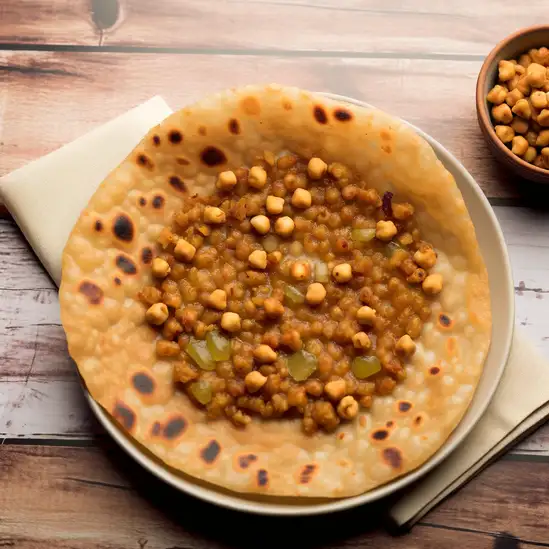



If you find yourself wandering through Pune Division,you’ll immediately notice a unique blend of old-world charm and youthful energy buzzing in the air. The city feels alive,not in a chaotic way,but like a well-loved book you can’t put down—full of stories,colors,and aromas that invite you to explore deeper. As you stroll through its bustling streets,the scent of freshly brewed chai mingles with the earthy fragrance of monsoon-soaked soil,while the distant hum of classical music from a nearby temple adds a soothing soundtrack to your day. Pune’s character is a beautiful dance between tradition and modernity. You’ll see centuries-old forts and temples standing proudly alongside vibrant cafes and art galleries. The locals,warm and welcoming,carry a quiet pride in their rich Marathi culture,which you can taste in the spicy,tangy flavors of street food like vada pav and misal pav. The city’s parks and tree-lined avenues offer peaceful respites,where you can watch students and artists sketching or friends sharing stories over steaming cups of coffee. What truly makes Pune special is its spirit of learning and creativity. It’s a city that encourages curiosity,whether you’re wandering through the lively markets,attending a music festival,or simply sitting in a cozy bookstore. Visiting Pune feels like stepping into a place where history and innovation coexist,wrapped in a warm,inviting embrace that makes you want to stay just a little longer.
The information on this page is currently being reviewed by Tripkliq and should be used as a guide only
Eng word: Hello
Eng pronunciation: Namaskar
Local language: नमस्कार
Eng word: Goodbye
Eng pronunciation: Niroop
Local language: निरोप
Eng word: Thank you
Eng pronunciation: Dhanyawad
Local language: धन्यवाद
Eng word: How much
Eng pronunciation: Kiti
Local language: किती
Eng word: Toilet
Eng pronunciation: Shauchalay
Local language: शौचालय
Eng word: Help me
Eng pronunciation: Madat Kara
Local language: मदत करा
Eng word: Yes
Eng pronunciation: Hoy
Local language: होय
Eng word: No
Eng pronunciation: Nahi
Local language: नाही
Eng word: Excuse me
Eng pronunciation: Maaf Kara
Local language: माफ करा
Shaniwar Wada, built in 1732, was the seat of the Peshwas of the Maratha Empire. This iconic fortification is a symbol of Pune's rich history and showcases the grandeur of Maratha architecture.
Pune is the birthplace of Bal Gangadhar Tilak, one of India's most prominent freedom fighters and social reformers. His contributions to India's independence movement are celebrated across the city.
Pune earned the title 'Oxford of the East' due to its prestigious educational institutions, some of which date back to the British colonial era, such as Fergusson College, established in 1885.
The Aga Khan Palace, built in 1892, is a historical landmark where Mahatma Gandhi and other leaders were imprisoned during the Quit India Movement. It is now a museum dedicated to Gandhi's life and work.
Pune is known as the cultural capital of Maharashtra, with a rich tradition of classical music, theater, and art. The Sawai Gandharva Bhimsen Mahotsav, a renowned music festival, is held here annually.
Sinhagad Fort, located near Pune, is a historic site where the legendary Maratha warrior Tanaji Malusare fought valiantly in the Battle of Sinhagad in 1670. The fort offers stunning views and a glimpse into Maratha history.
Pune's history dates back to the 8th century when it was part of the Rashtrakuta dynasty. The city was originally known as 'Punya Vishaya,' meaning 'sacred land.'
Pune is home to the Osho International Meditation Resort, a global center for meditation and spiritual growth. It attracts visitors from around the world seeking peace and mindfulness.
The Pataleshwar Cave Temple, carved out of a single rock in the 8th century, is a remarkable example of ancient Indian rock-cut architecture. It is dedicated to Lord Shiva and is a serene spot in the heart of the city.
In Pune Division, the most common Power Adaptor is Type C, Type D, Type M.







A savory steamed cake made from fermented chickpea batter, typically served with green chutney.

A popular street food consisting of a spicy potato fritter sandwiched between bread, served with chutneys.

A sweet flatbread stuffed with a mixture of jaggery and split yellow gram, often enjoyed with ghee.

A rustic dish made from gram flour curry served with bhakri, a type of unleavened bread.

A refreshing drink made from coconut milk and kokum, often served as an accompaniment to meals.

A traditional flatbread made from coarse grains like jowar or bajra, often served with ghee and chutney.

A spicy curry made from sprouted lentils, served with bread rolls, topped with onions, lemon, and farsan.

A dish made from tapioca pearls, cooked with peanuts, potatoes, and spices, often eaten during fasting.

A savory snack made from gram flour and fresh coriander, steamed and then shallow-fried.

A multi-grain flatbread made with a mix of flours and spices, often served with butter or yogurt.
Imagine stepping into a city that pulses with energy,where every street corner hums with life and stories waiting to be discovered—that’s Mumbai for you. The moment you arrive,you’re wrapped in a vibrant tapestry of sounds:the rhythmic clatter of local trains,the lively chatter of street vendors,and the distant call of temple bells blending with honking rickshaws. The air carries a mix of spices from roadside stalls,mingling with the salty breeze from the Arabian Sea,creating an intoxicating scent that’s uniquely Mumbai.
Walking through its bustling lanes,you’ll see a kaleidoscope of colors—bright saris fluttering in the wind,intricate colonial architecture standing proudly beside sleek skyscrapers,and street art that tells tales of the city’s soul. Mumbai’s character is a beautiful contradiction:it’s fast-paced yet welcoming,chaotic yet deeply rooted in tradition. The city’s heartbeat is its people—dreamers,artists,and entrepreneurs who wear their resilience and warmth like a badge of honor.
And then there’s the food—oh,the food! From the tangy,spicy street-side vada pav that feels like a warm hug,to the rich,aromatic biryanis and fresh seafood by the sea,every bite is a celebration of flavors. Mumbai invites you to lose yourself in its maze of neighborhoods,each with its own rhythm and charm,promising moments of surprise and connection. It’s not just a place to visit; it’s a city that stays with you long after you’ve left.
Imagine stepping into a place where the sun kisses your skin,the salty breeze carries the laughter of beachside chatter,and every corner hums with a laid-back yet vibrant energy—that’s North Goa for you. It’s a lively patchwork of golden sands,swaying palms,and colorful shacks where the aroma of sizzling seafood mingles with the faint scent of frangipani flowers. Whether you’re wandering through the bustling markets of Anjuna or watching the sun dip behind the waves at Calangute,there’s a rhythm here that feels both timeless and alive.
What really makes North Goa special is its blend of cultures and carefree spirit. You’ll find Portuguese-influenced architecture standing proudly alongside lively street art,while the music—from mellow acoustic sets to pulsing electronic beats—drifts through the air,inviting you to join in. The locals,warm and welcoming,add a genuine charm that makes you feel like you’re part of a big,sun-soaked family.
And the flavors! Freshly caught fish grilled with spices that tease your taste buds,tangy Goan curries,and sweet,creamy feni that’s perfect for toasting to new adventures. As night falls,the beach transforms into a playground of bonfires and music,where stories flow as freely as the ocean breeze. North Goa isn’t just a destination; it’s a feeling—a place that stays with you long after you’ve left.
A historic port city in Kerala,Kochi is known for its backwaters,Fort Kochi,and the nearby Vypin Island,offering a blend of natural beauty and cultural heritage.
ExploreA coastal city near Pune,Alibaug is famous for its pristine beaches and the scenic Kolaba Fort,located on an island accessible during low tide.
ExploreA coastal city in Karnataka,Mangalore is known for its serene beaches,lush greenery,and proximity to the St. Mary’s Islands,a unique geological wonder.
ExploreImagine stepping into a place where the ocean’s turquoise hues stretch endlessly,and the gentle hum of waves lapping against coral reefs becomes your daily soundtrack—that’s Lakshadweep for you. This cluster of islands feels like a serene escape from the world’s rush,where time slows down and the air carries a salty freshness mixed with the faint scent of coconut palms. Walking along the powdery white beaches,you’ll notice the vibrant marine life just beneath the surface,inviting you to dive in and explore a kaleidoscope of colorful fish and coral gardens.
What truly sets Lakshadweep apart is its intimate connection to the sea and the warm-hearted islanders who live in harmony with nature. The culture here is deeply rooted in simple,joyful traditions—imagine sharing freshly caught seafood grilled over open flames,flavored with local spices that tease your taste buds,while the sun dips below the horizon in a blaze of orange and pink. The islands’ laid-back vibe encourages you to slow down,breathe deeply,and savor moments of quiet beauty.
Beyond the beaches,the islands offer a glimpse into a unique way of life shaped by the ocean’s rhythms. You’ll find small villages where fishing boats bob gently in the harbor,and children’s laughter mingles with the calls of seabirds overhead. Lakshadweep isn’t just a destination; it’s a feeling—a peaceful,soulful retreat that stays with you long after you leave.
Unlicensed money exchangers offer poor exchange rates or hand over counterfeit currency to tourists.
Scammers pose as representatives of charities and pressure tourists into donating money for fake causes.
Scammers impersonate police officers and accuse tourists of minor infractions, demanding bribes to avoid trouble.
Scammers sell fake tickets for popular attractions or events, leaving tourists stranded at the entrance.
Scammers pose as tour guides and charge tourists high fees for subpar or fake tours.
Tourists are tricked into paying for non-existent or substandard accommodations through fake websites or agents.
Tourists are lured into shops where items are sold at inflated prices, often with pressure tactics.
Drivers refuse to use meters and charge exorbitant fares, especially for tourists unfamiliar with local rates.
Unsuspecting tourists are offered food or drinks laced with sedatives, leading to theft of their belongings.
Children or women with babies approach tourists, claiming to need money for food or medicine, but the money often goes to organized groups.
The use, possession, sale, and distribution of narcotic drugs and psychotropic substances are strictly prohibited under the Narcotic Drugs and Psychotropic Substances (NDPS) Act,1985. Penalties for drug-related offenses are severe and can include heavy fines and long-term imprisonment. Tourists should avoid any involvement with drugs, as even small quantities for personal use can lead to legal trouble. Additionally, drug-related activities near schools or educational institutions attract harsher penalties.
Smoking is prohibited in public places in Pune, as per the Cigarettes and Other Tobacco Products Act (COTPA),2003. Public places include offices, restaurants, public transport, parks, and other areas accessible to the public. Designated smoking zones may be available in some establishments like hotels or airports. Violators can face fines. Tourists should also avoid smoking near schools, hospitals, and religious places, as it is considered disrespectful.
Vaping is banned in India, including Pune, under the Prohibition of Electronic Cigarettes Act,2019. The sale, production, import, export, distribution, and advertisement of e-cigarettes are prohibited. Possession or use of vaping devices can lead to penalties, including fines and imprisonment. Tourists should avoid carrying or using vaping devices in the city.
What are other people saying about Pune Division?
Recent Social posts about Pune Division
There is nothing to show you for now.